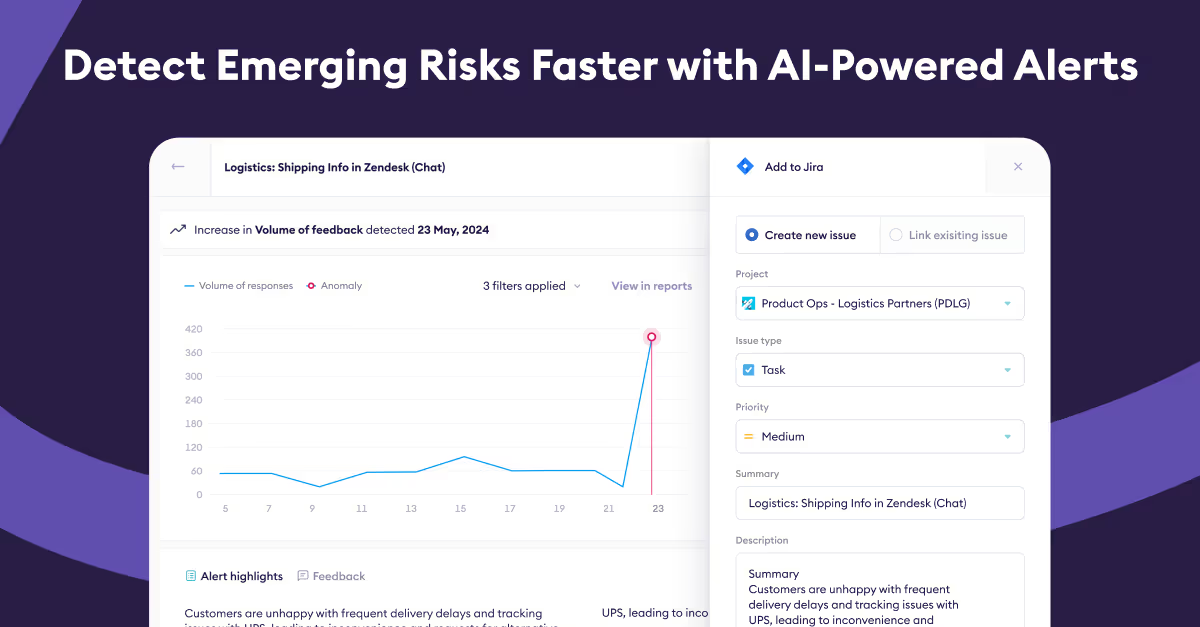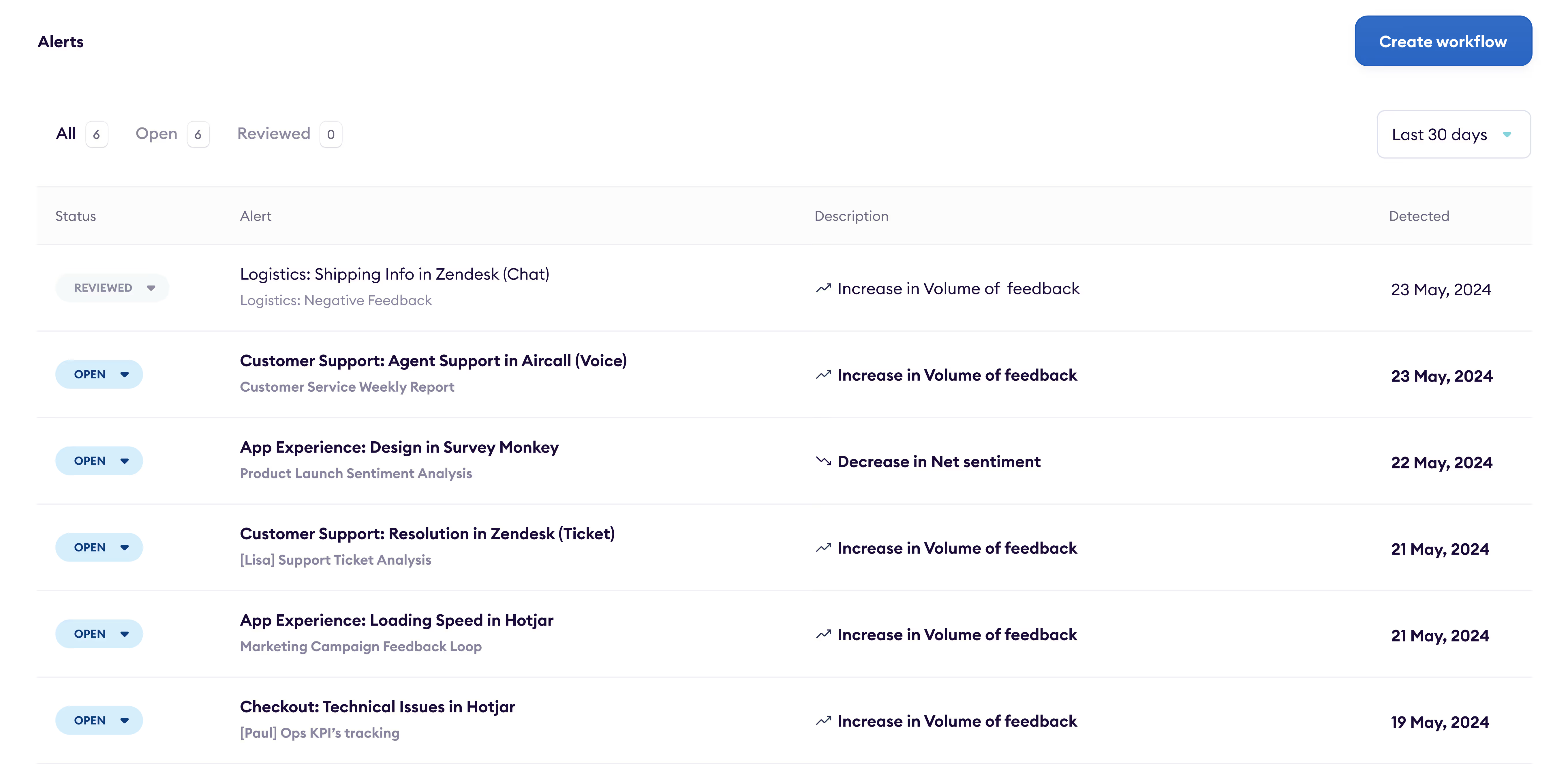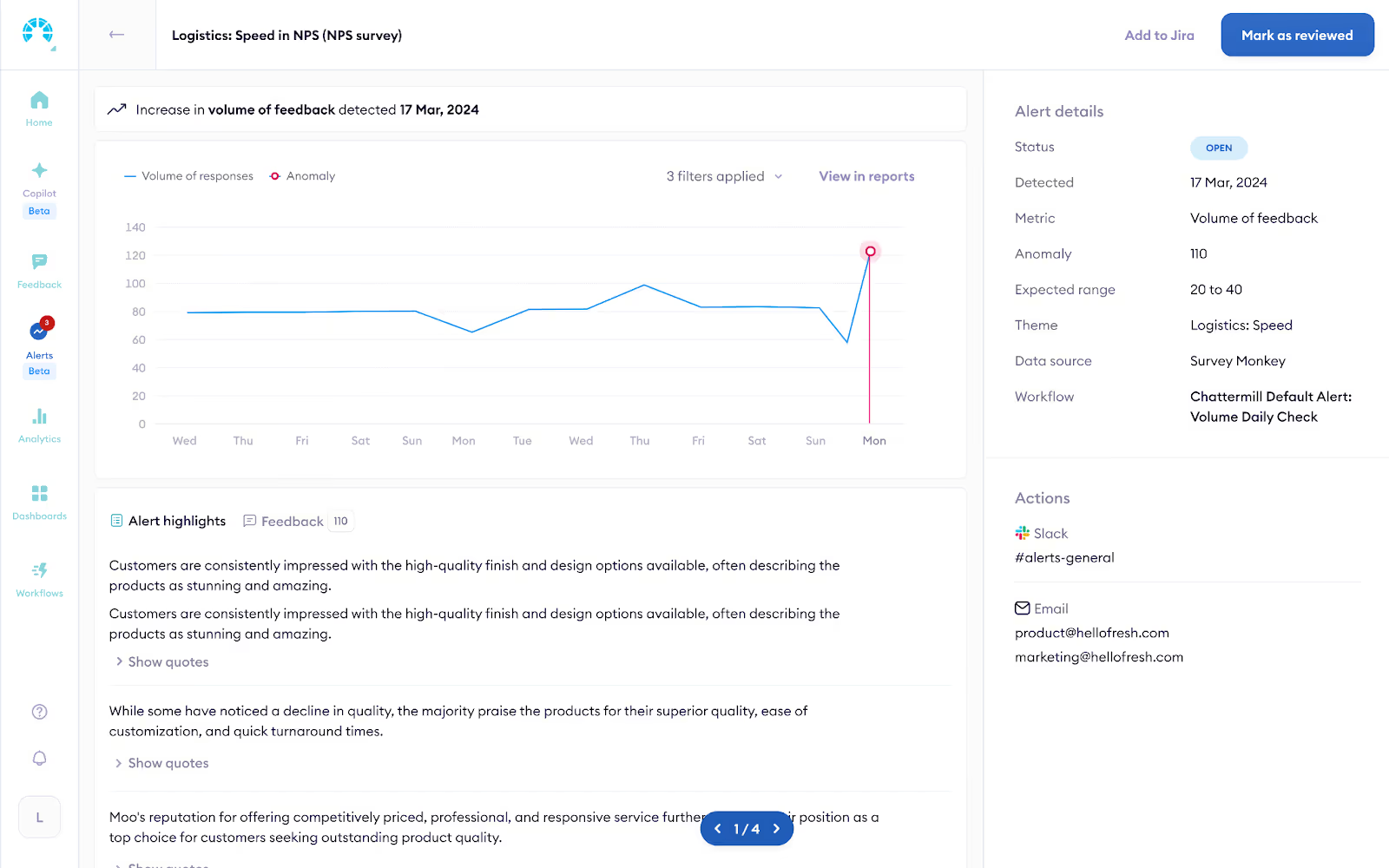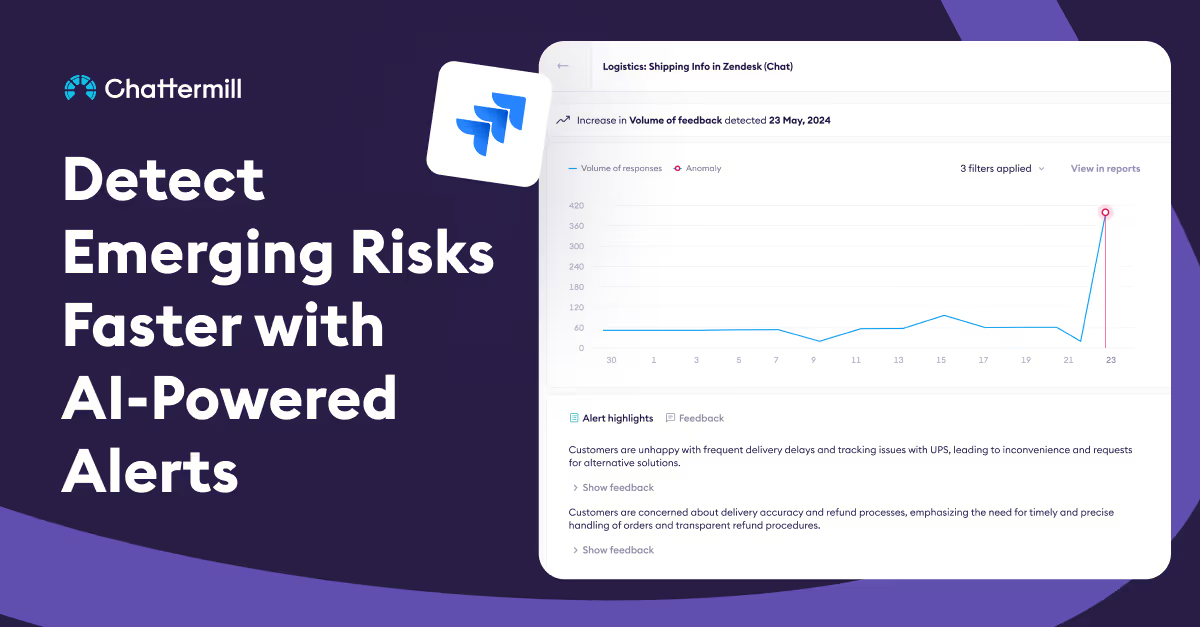
A glitch that repeatedly crashes your website. A delivery provider that suddenly slows. An in-demand product that runs out of stock.
Issues like these are the stuff of nightmares for customer-obsessed CX, Product and Support professionals. Staying on top of every corner of your business isn’t easy, but the bar for maintaining exceptional customer experiences is at an all-time high.
This is why we’re excited to launch our revamped and updated Alerts. With built-in anomaly detection, Alerts help you identify and respond to incidents and data spikes faster, while giving you confidence your team is addressing the right issues, at the right time.
Our new Alerts are easier to manage and customize, so you can identify customer issues faster and with greater precision, while keeping your team in the loop.
On top of this, Alerts now integrate with Jira - so you can ensure your Product and Engineering Teams are informed when theirwork is needed.
Want to take a closer look? Let’s see what’s new!
Customize alerts your own way
Every business has its own nuances to how they operate. One Alert simply doesn’t fit all!
Alerts can be customised to fit specific filters, honing in on the exact area of your business you’d like to track. This might be monitoring feedback related to a specific product feature you’ve just launched, so you can keep track of the launch and guide development and improvements.
You can also adjust the frequency for when Alerts are detected, so your team can be updated on whether there’s notable spikes on either a weekly or daily basis.
New Alerts also enables you to set the sensitivity for when Alerts are triggered. Choose between high, medium or low, with low only requiring a small shift in response threshold, whilst high requiring a large shift.
Managing all your alerts from one place

As your business scales, so too do the business areas you need to monitor.
But with piles of notifications to sift through, there’s a danger your team ends up missing something significant. “Did anyone fix that bug?” isn’t a question you want to hear.
New Alerts is grounded in a unified home page, where you can get a birds-eye view of all of the Alerts that have been sent to you and your team.
You can quickly filter to only see the Alerts sent from a set time period, and mark Alerts as either ‘Resolved’ or ‘Open’ - keeping your team in sync on whether issues are still live, or have been attended to.
More details and visuals to explore

Finding out there’s been an issue is good, figuring out the full context is better.
From within the Alerts menu, you can dive into any of the Alerts you’ve received for deeper analysis of why the notification was sent.
Complete with a visualisation of the Alert against the history of your data, you can see the filters applied to the workflow it was sent to, the expected range for your data, and where your alert was sent to.
And to bring insights to you even faster, Insight Assistant sits below the graph view with a summary of what your customers are talking about in the relevant feedback data.
It’s all integrated with Jira
We’ll meet you where you are. Alerts can be pushed to Slack, so you can inform your team members right within their own team workspace when something’s awry.
What’s more, new Alerts now integrates with Jira, helping you keep your Engineering and Product Teams in sync on which issues are a priority.
To do this, simply click to enter the individual Alert viewer, and click the ‘Add to Jira’ button at the top right of the menu.
How you can use alerts
Keeping track of delivery issues
Let’s say you’re gearing up for a large spike in retail orders, so the pressure is on to ensure your deliveries are made on-time.
However, the busy shopping season isn’t without other pressures, and your team’s time is stretched carrying out important work. They don’t have time to log in every day and to check if deliveries are running smoothly.
With Alerts, you can track responses related to deliveries, and get notified when things start to go awry (slow speeds, shipments damaged). You’ll have confidence to carry on your other work, without feeling like your team’s eyes are off the road.
Here’s how the team at Monica Vinader uses Alerts to track delivery issues:
"During the last high-shopping season, all the carriers in the UK struggled with major disruptions and late deliveries. We set up Anomaly Alerts and monitored the sentiment for all the carriers day by day. When customers were frustrated with one carrier, we could switch to another one. And if some packages were lost, we could quickly discover the issue among thousands of comments in Chattermill, proactively reach out to the customer, solve the problem and win them back." Jade Roberts, General Manager, Customer Experience, Monica Vinader
Monitoring the impact of UX changes
You’ve recently redesigned your online checkout experience to the benefit of your customers. However, you’re unsure whether these changes might be confusing to some customers, and there’s the added risk you might not have caught every bug.
By monitoring your feedback for mentions of ‘checkout’, you can keep an eye on whether any of your changes are causing upset among your customers.
And if you spot that these comments are related to a glitch in your website, you can turn this alert into a Jira ticket with one click, notifying your engineering teams that something needs their attention.
Customer reactions to a product withdrawal
Alerts can be equally good at spotting issues which you’ve not prepared for. With an Alert set up to monitor sentiment across your whole business, you’ll get informed when there’s a spike in negative sentiment across the board.
Say you’ve recently made a change to their marketplace roster and removed a product from shelves. This wasn’t a product you thought particularly resonated with your customers - and all the more reason for removing it. However, within a week of you removing it, Alerts notifies you to a major increase in negativity, with comments detailing frustration at not being able to find the product you’ve removed.
Without this set up, this shift might have passed under-the-radar, but thanks to Alerts you now have a better understanding of your customer preferences.
Get started
Our new Alerts are now available for all Chattermill users. Need assistance in setting up tailored Alerts for your team? Contact your Customer Success Manager for support. For more details, visit our documentation.















